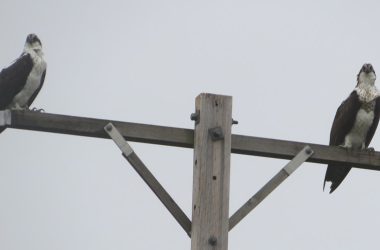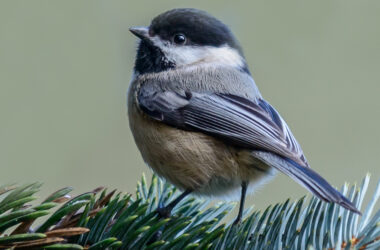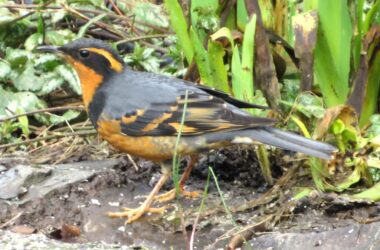The Motus tower tracking bird migration at Ankeny National Wildlife Refuge will soon celebrate its first anniversary. It began operating Oct. 24 last year.
The Motus Wildlife Tracking System is an international collaborative network of stationary radio receivers that capture data from tags attached to migratory birds when they fly within range.
There is still no other Motus signal sensor anywhere in the northern Willamette Valley or Portland Metro area. So far, three bird species have been detected flying past or stopping at Ankeny. All have come down from British Columbia. At least one bird began travel from Alaska. The species are dunlin, robin and a cousin of the robin, Swainson’s thrush. For a more complete explanation of how the Motus system works, check my introductory piece from last May below.
The first Motus pick-up at Ankeny happened Oct. 27, 2022. That’s just three days after this tower began functioning. It was a dunlin, a medium-sized shorebird, first tagged with a transmitter in January 2022 in California’s Central Valley where it over-wintered. Then it headed north that spring. The first signal from it during the fall, southbound migration was at Ankeny. From there it returned to the Central Valley, revisiting the same places it had been the previous winter.

One tagged American robin spent a month at Ankeny, from Jan. 10 through Feb. 10 this year. Later it headed north and was located at Discovery Island in British Columbia in April. On Sept. 20 it turned up along the Stikine River in southern Alaska. We have no data from where it may have nested during the summer.
In late April this year four dunlin were located over Ankeny. Each was headed north after wintering in California. Three were tagged in the Sacramento Valley and, far past Ankeny, were picked up on the Alsakan Coast at Controller Bay. A fourth was tagged at Tomales Bay, passed here, but was not re-located after it left Vancouver Island.
Six Swainson’s thrushes have passed over Ankeny this September, all headed south. Two of them had been located in Guatemala last winter.
When every major park, refuge, nature preserve, river bridge, college and high school, and even some private open spaces have a Motus tower we will know so much more about our feathered neighbors and how to help them survive.
To check Ankeny Motus data and migration maps online, visit https://www.ankenyhillnaturecenter.org/motus.
For information about upcoming Salem Audubon programs and activities, see www.salemaudubon.org, or Salem Audubon’s Facebook page.
Harry Fuller is an Oregon birder and natural history author of “Freeway Birding” and the newly-published “Birding Harney County.” He is a member of the Salem Audubon Society. Contact him at [email protected] or atowhee.blog. His “Some Fascinating Things About Birds” column appears regularly in Salem Reporter.
STORY TIP OR IDEA? Send an email to Salem Reporter’s news team: [email protected].
SUPPORT OUR WORK – We depend on subscribers for resources to report on Salem with care and depth, fairness and accuracy. Subscribe today to get our daily newsletters and more. Click I want to subscribe!

Harry Fuller is an Oregon birder and natural history author of three books: “Freeway Birding,” "Great Gray Owls of California, Oregon and Washington," and "San Francisco's Natural History--Sand Dunes to Streetcars." He leads birding trips for the Malheur Field Station. He is a member of the Salem Audubon Society, and leads bird trips locally. Harry has just published a new book, BIrding Harney County.









